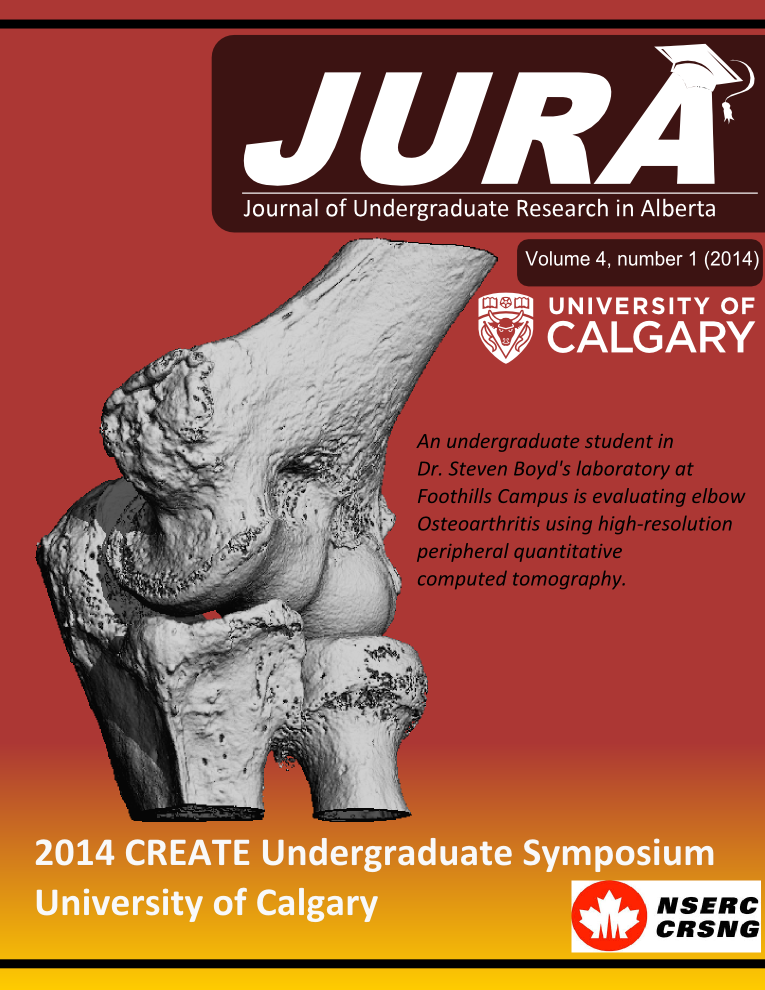EVALUATION OF PRIMARY ELBOW OSTEOARTHRITIS USING HIGH-RESOLUTION PERIPHERAL QUANTITATIVE COMPUTED TOMOGRAPHY: A PILOT STUDY
Abstract
INTRODUCTION
Osteoarthritis (OA) is a degenerative joint disease characterized by morphological and histological change of bone and cartilage. A feature of this disease is the development of osteophytes, which alter the structure of the bone. Changes in bone structure are especially common in the olecranon fossa of the humerus [1].
With the advent of high-resolution peripheral quantitative computed tomography (HR-pQCT), researchers have been able to examine the microarchitecture of human bone in vivo. Using HR-pQCT one can evaluate both structural and density
parameters of bone.
Primary OA of the elbow has a unique disease progression. While standard radiographs are used in diagnosis of this disease, these images cannot provide information on joint microarchitecture. To the best of our knowledge, microarchitectural changes in primary elbow OA have not been examined. Prior to this study, HR-pQCT technology has only allowed for in vivo imaging of peripheral sites. With second generation scanners, images of the elbow in vivo can be obtained due to the larger diameter field of view and longer gantry. The current project involved developing a scanning protocol appropriate for this population and anatomical region to explore the effects of this disease on the underlying bone structure. Examining the microarchitectural changes could provide insight into the pathophysiology of this disease.
METHODS
One male subject with primary OA (aged 47) and three age and gender matched, healthy controls (aged 36-59) were recruited. Elbow pain and function were recorded using the PREE questionnaire [2]. Image data of the participants’ dominant humerus were acquired using a HR-pQCT scanner (XtremeCTII; Scanco Medical). To minimize movement artifacts, the subjects were instructed to remain still and their arms were immobilized using a custom-made, padded, carbon fibre support that provided rigidity and comfort. A scout view ensured the region of interest was correctly defined; a trained operator manually aligned the reference line to ensure the entire region was scanned. A 40.79mm scan consisting of 672 slices was obtained to capture the distal humerus including the olecranon fossa (Figure 1) using a protocol similar to the manufacturer’s standard for other anatomical regions (61μm nominal isotropic voxel size, 43ms integration time, 900 projections). Images were contoured manually and subsequently evaluated using Image Processing Language (v5.15, Scanco Medical).
RESULTS
A scan protocol consisting of a single scan of four stacks was determined to be most appropriate for this population to minimize scan duration (15min) and movement while still capturing the area of interest. However, motion artifacts were still noted in many scans. The resulting images showed great variability in the anatomy of the olecranon fossa.
DISCUSSION AND CONCLUSIONS
Prior to this study, in vivo HR-pQCT images of the elbow had not been obtained. Through this pilot project a scan protocol to capture the olecranon fossa of the humerus was developed.
The variability in the anatomy of the region has led to difficulty in isolating the area of interest, thus making quantitative analysis of microarchitecture more complex. Future directions include scanning additional subjects and finalizing how to determine the borders of the olecranon fossa to enable quantitative analysis of bone microarchitecture in this region. Studying this region will increase our understanding of the pathophysiology of OA.
Downloads
References
2. MacDermid JC. J Hand Ther. 14(2):105-114, 2001.
Downloads
Published
Issue
Section
License
Authors retain all rights to their research work. Articles may be submitted to and accepted in other journals subsequent to publishing in JURA. Our only condition is that articles cannot be used in another undergraduate journal. Authors must be aware, however, that professional journals may refuse articles submitted or accepted elsewhere—JURA included.


